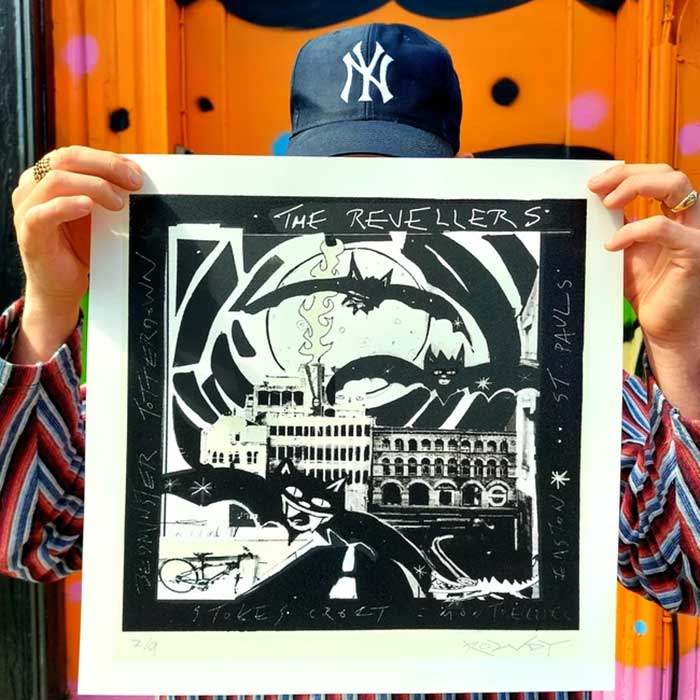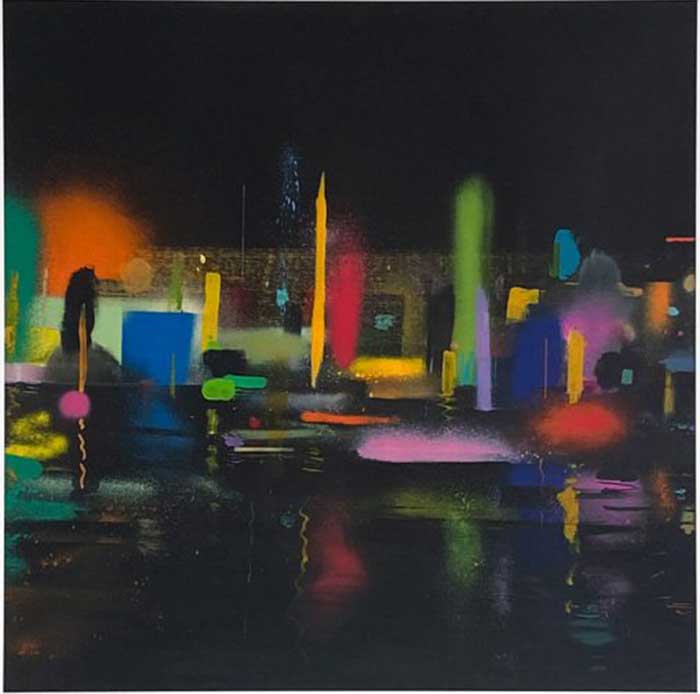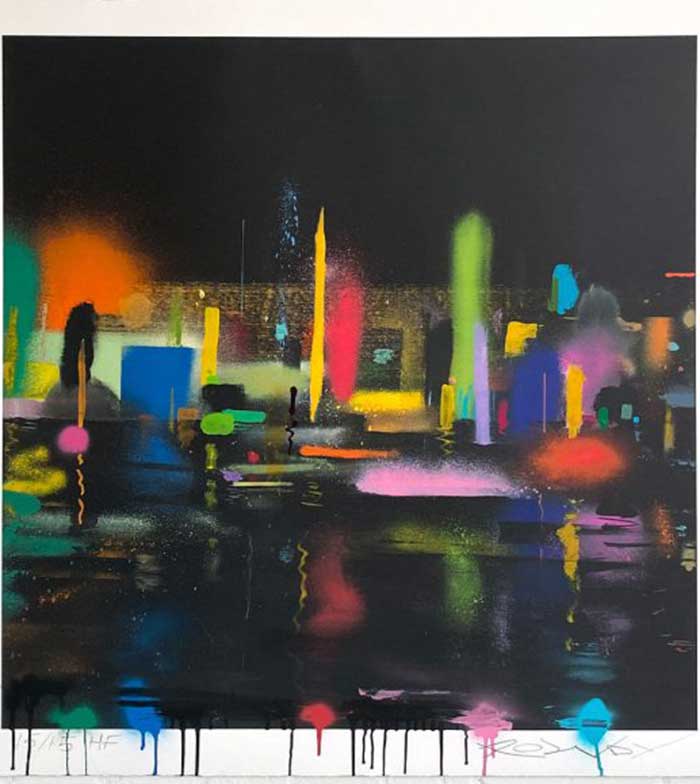
Rowdy
Rowdy’s large scale murals of his trademark mouse and crocodile motifs are indicative of the playful nature of his work and just one of the reasons he continues to attract a growing tribe of fans and collectors.
How RoWdY’s name came to be.
“I had several tags before Rowdy. I got into several fights over about three weeks when I was 18. Punch-ups and stuff. I knew it wasn’t really a good idea but I had a lot of energy at the time. The name derived from that. I decided that it was quite rowdy behaviour and a few friends used it as a bit of a joke. It seemed quite apt. What I realised was that I could use that name as like an energy release. I would get rowdy on a wall, really go at it. It made a lot of sense so I stuck with it. You also need a name that’s not your own name, kind of obviously, although not so much nowadays.” “I use art like an energy release”.
Rowdy’s abstract cityscape paintings show skyscrapers constructed out of the tiniest marks a spray-can can make, floating colour fields combined with 1980’s graffiti fades. Some are bustling and hectic, recalling markets and highways, motion and change, whilst others show a more meditative side to the city, haze and city lights hover within an expansive luminous ground.
“Since I started painting, I have never looked back”. “I came to Bristol for the music and the art, more places to paint, a better quality of scene. Back when I started in 87, you’d go and steal the paint. Go to a shop and steal a few cans while your friends distract the person on the till. Once that happened and I started using the paint, my life changed and I have never looked back. I’ve kept at it.”
When Rowdy’s creative space and home burnt down, Bristol graffiti artist Banksy was one of the first to step up and donate a painting to raise funds for a fellow artist who lost everything in a fire.
Rowdy’s crocodiles loom large on the streets of Bristol and beyond with a quiet menace. His cast of other characters which abound with abrasive energy are plenty. But the Bristol-based artist’s abstract landscapes, which can be read as both highly political but also deeply personal, represent a far more reflective and contemplative side to his work. An entire building is depicted by an individual mark such as the smudge of a fingerprint, the stroke of a paintbrush or the squirt from a spray-can and this reduces the city down to an abstracted, minimalist form with the different marks being used to bring out the essential characteristics of the individual buildings. This reductionist approach can be viewed as mirroring the city as shaped by those with financial and political power who have erected monolithic buildings that marginalize and diminish individuals in favor of institutions and corporations; a kind of manifestation of the historian R. H. Tawney’s proclamation that “Freedom for the pike is death for the minnow.” However, the paintings also suggest a tender and intimate relationship between the artist and the city, free from the audible and visual noise that distracts us from our immediate environment.
As a member of the infamous Burning Candy crew, The last few years have seen him collaborate with cohorts Cyclops & Sweet Toof resulting in one of the most widespread bombing campaigns seen in London in the last decade, and long may it continue!



